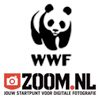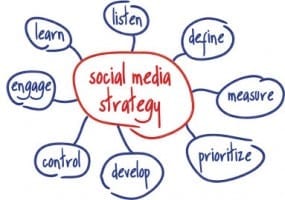WWF: 7 steps towards a successful social media case

WWF’s communication is focused on dialogue, transparency, engaging and mobilizing. The organization wants to connect with its supporters, to motivate and mobilize them towards environmental conservation. One of the Dutch WWF’s successful social media cases is that of the WWF-photography community on Zoom.nl. This article will outline seven practical steps towards a lively and meaningful community and is a translation of the Dutch version.
World Wide Fund for Nature is dedicated to protecting the planet’s diversity of plants and animals. With a number of followers ranging up to almost a million individuals in the Netherlands alone (supporters, young members, friends in social media), WWF is truly able to achieve something. For example, stimulating the use of FSC wood and promoting the consumption of sustainably caught MSC-fish.
In this article, we will outline 7 steps towards one of our communities, www.zoom.nl/wnf on zoom.nl, the largest community of photographers in the Netherlands. On zoom.nl, the Dutch WWF works together with over 4000 photographers.
Seven steps
- Determining whether WWF should use social media
- Specifying the right preconditions
- Developing a social media strategy
- Focusing on Zoom.nl
- Growth within the community
- Results and lessons learned
- Determining the next steps.
1. Determining whether WWF should use social media
WWF has formulated 3 separate long-term goals:
- Growing; towards over 1 million followers (contributors, super promoters, friends in social networks)
- Engaging; cooperating with contributors, fans and friends, governments, businesses and other social organisations.
- Mobilizing; asking people to get involved, whether by sending in a beautiful picture of nature, or by cutting back on their meat consumption.
WWF wants to reach these goals by using all available resources; one main resource is online communication. Several studies were done to provide an overview of WWF’s target audiences. This has offered a better understanding of their common interests, and also revealed where they could be found in the online landscape. In the end, the decision to use social media was based on 4 considerations:
- WWF wants to engage more with its followers
- Target audiences share several interests: sports, travel and photography
- Target audiences have indicated a desire to share their thoughts with WWF
- These days, everybody is a reporter and a potential super promoter for WWF.
2. Specifying the right preconditions
Getting your own organization on board is possibly the most important precondition. After all, if you want to make proper use of social media, it has to be utilized throughout the organization. Press officers, customer service, environmentalists, and the web team. Therefore it is important to talk about schedules and agreements, powers and responsibilities, and the use of FTE, beforehand.
Training employees to engage with their target audience via social media. How do you handle service questions (“I didn’t receive the information for my presentation at school, yet”, “I haven’t received the WNF magazine, yet”). How do you welcome new members, how do you compliment on or recommend something, and how do you encourage people? These issues were addressed in courses on community management, which were arranged for the people implementing the social media efforts of WWF. Additionally, we organized a Master class ‘Nature conservation 2.0’ for all our practicing environmentalists. We also created a social media guideline and instruction manual for WWF volunteers, WWF bloggers, and WWF twitterers.
Facilitating ambassadors is the holy grail of social media to WWF. We look for ambassadors within our own circles; they are our WWF colleagues (who are fanatic bloggers and twitterers about things related to their work for WWF), our 2500 volunteers across the Netherlands (some of whom write blogs or are active on Twitter), and the specialized social media team (consisting of 10 people from within and outside WWF who have volunteered to manage the WWF communities). We try to make it as easy as possible for our ambassadors to make optimal use of social media. We write social media manuals, and organize courses on communication. We also organize periodic social media team days with, among others, our volunteering community managers, during which we closely examine the progress made by our various social media channels.
3. Developing a social media strategy
 When the organization realized the significance of using social networks, we developed a social media strategy. First a general strategy, then a specific strategy developed for each individual social media channel. For every strategy (both general and specific) we defined separate aims and KPIs.
When the organization realized the significance of using social networks, we developed a social media strategy. First a general strategy, then a specific strategy developed for each individual social media channel. For every strategy (both general and specific) we defined separate aims and KPIs.
We based the general social media strategy on the following basic principles:
Listening is step one in all communication – social media is no exception. By listening, we realized that our supporters especially seek service and attention. This can mean quickly receiving the correct link to a presentation pack or correcting a wrong order. Often it does not even concern issues of nature conservation. Listening is mostly done through Twitter and Online Customer Intelligence Tools. For example, listening through Twitter informed us of the fact that the lights in the WWF Christmas tree in Utrecht Central Station were out of order. We immediately replied that we were on our way to fix them! Similarly, we found out that WWF’s central telephone office was down. Obviously, we also respond to customer service matters: we immediately answered a tweet from someone who had registered as a volunteer, but had not received a confirmation, yet. In this case, listening and responding via the social media made a good volunteer feel appreciated.
Informing. With our large database, pushing information is relatively easy for WWF. However, social media have offered us the opportunity to provide relevant, one-on-one information, and the ability to reach niche communities. This allows us to communicate in a more personal, direct, and relevant manner, in other words: to get closer to our fans, friends and contributors.
Participating. WWF is also interested in participating; working together to help preserve nature. We do this by appealing to people through their interests and asking them to participate. But what exactly are those interests? WWF profile analyses have shown that WWF supporters show an above average interest in photography, travel and sports. Especially the preference for photography has been an eye opener for the WWF. We contacted Zoom.nl, the largest community of photographers in the Netherlands. Together with Zoom we organized two WWF photo contests, both which were announced in a big article about WWF. Over 2000 people participated. An excellent collaboration with great spin-off, because we were able to use many of the pictures in our publications. The winners were rewarded with a photography course in the WWF office. Because of this, several of the winners have become dedicated WWF ambassador, and we were able to establish a very relevant connection.
No ‘digital tombstones’. There is no point in joining a community if you cannot deliver relevant input. Doing this may even work against you. Presence only is not an option. With this in mind, we had to apply a clear focus in using social media. We selected 5 social media channels which already contained our target audience ‘naturally’, and for whose audience we could be relevant. The Dutch WWF’s ‘Big Five’ are:

- Zoom.nl/wnf
- Hyves
- Waarbenjij.nu
Next, we established the following preconditions:
- Locking in with the aims of the WWF organisation. This goes without saying. By being consistent with the overall goals, you are guaranteeing top-down and bottom-up commitment.
- All content has to be ‘chunckable’. Blogs from wnf.waarbenjij.nu, written by WWF-ers in the field, are also posted on the ‘What we do’ page on wnf.nl. Our twitter feeds can also be followed on wnf.hyves.nl. In other words: digital presence on the same sites your fans visit, not just your corporate website.
- We consider interaction via social media to be official WFF communication. A very basic rule. The interaction may be personal, but WWF employees still have to be aware that they are speaking on behalf of WWF, even on their own social media channels like their private Facebook page.
- Performance figures determine how (social) media will be used. Performance is measured by looking at growth in numbers (number of photographers, followers, friends, et cetera), and we also look at relevance (for instance the number of replies to a blog).
- Cross-media thinking. These days: thinking in 365 degrees. Our blogs might also be interesting for our magazines. A tweet may be fascinating content for the website. An assembly of our twitter followers at the WWF office can be seen as personnel recruitment.
As stated before, in addition to the general strategy we also developed specific strategies for our efforts in niche communities. In the following chapters of this article we will describe the Zoom.nl case.
4. Focusing on Zoom.nl

Zoom.nl-foto on WNF Zoomcommunity
Based on the knowledge that part of our followers is interested in (nature) photography, focusing on this niche community seemed a promising strategy. We truly believed in the necessity of appealing to people through their own interests. Bottom-up, we also noticed that WWF employees are eager to share their nature experiences with engaged WWF followers through the use of photography. Travelers, photographers who contacted the WWF, always wanted to share their pictures with us. Before, we always had to say no – we had our own database with photographs. This is obviously not very gracious; when people want to give you something, it is much better and nicer to say yes!
We also realized that nature photography is important to Zoomers (the photographers who are members of the Zoom community). In addition, the Zoom.nl ‘experience-beurs’, the first large-scale event for digital photography in the Netherlands (22.500 visitors in 2010), seemed like a perfect place to meet WWF fans.
With Zoom.nl, we developed a cross-media concept. The online community (www.zoom.nl/wnf with 84.000 active Zoomers) and the magazine Zoom.nl (circulation over 60.000) played an important part in this. WWF was triggered by the knowledge that the magazine Zoom.nl is the only monthly magazine in the Netherlands with an increasing circulation. The reason: the magazine is mainly filled with pictures that have been posted within the online community. User-generated content sells; if your own picture is printed in a glossy magazine, you will certainly buy some copies for family and friends!
Setting goals
For WWF members we set the following goals:
- 4000 connected photographers by the 1st of May 2011
- 6000 pictures of good quality that WWF can use for its own media.
Zoom.nl also set goals:
- PR within WWF communication.
- Exploring and expanding the photography of nature.
- New subscribers
Start of cooperation
The official cooperation between WWF and Zoom.nl started in December 2009. At first, we decided to experiment without too much publicity. A short message was posted on the websites of WNF.nl and Zoom.nl. A small article was also printed in Panda (Dutch WWF contributors’ magazine) which called on its readers to join the new WWF-group on Zoom.nl. The voluntary community managers of WWF tried to increase the amount of members within the zoom.nl community by applying to photographers personally.
After two months, these efforts were evaluated and proved to be positive. The expectation that Zoomers would want to connect to WWF through photography of nature was indeed accurate. After this, we decided to intensify the cooperation.
5. Growth within the community

Winner WNF Zoom contest
Through Zoom.nl, we started an annual photography contest .The campaign fitted in with the WWF’s Happy End campaign of spring 2010, and with the new WWF slogan Pass on the Earth in 2011. All members of the Zoom.nl community were invited to join the contest, and applicants automatically became members of the WWF group. The Zoom-magazine in which we announced the contest was delivered on the day before Ascension Day in the Netherlands: a weekend off in which many people go out into nature.
We used our own media to promote the event; all social media channels of WWF and Zoom (LinkedIn, Twitter, Hyves, Facebook), but also our own magazines (Panda and Zoom.nl), websites and e-zines, and of course simple tools like the ‘signatures’ in emails of our WWF employees.
In May 2011 we completed the WWF-Zoom-contest 2011. The winners of the contest received, among other things, a photography workshop in the WWF office. This was a concrete way of ‘facilitating WWF ambassadors’. WWF is able to present itself, and connects to its followers one-on-one. And a photography workshop will hopefully lead to even better pictures!
6. Results and lessons learned
After these events we took inventory of the effort made by WWF within the Zoom.nl community.
The final results for WWF:
- 4086 connected photographers (goal was 4000 by July 1st 2011)
- 6100 photographs of good quality (goal was 6000).
Overall, we gained a better understanding of the WWF supporters on Zoom.nl:
- The quality of the contributed material ranged from good to very good, and sometimes excellent
- Dutch nature indeed proved to be a popular subject among our followers. You do not have to travel far to enjoy beautiful nature
- By using macro photography, photographers exposed a new and mostly unknown perspective of wild nature.
Because we used and evaluated our media efforts so attentively, we also gained new insight into advertising within the social media. For more on this, also take a look at the WWF case on measuring with Google Analytics. For example, with a small budget the Facebook ads (targeted to photographers) supplied a great amount of participants. The overall result: a high success rate and low costs per conversion.
Timing is extremely important when launching a campaign designed to mobilize your target audience. As said before, we deliberately launched the campaign on Ascension Day. Partly due to the great weather, this created a jump start to the beginning of the campaign.
7. Determining the next steps

WNF in zebra-look at Zoom Experience
After the winners had been announced, several steps were taken to permanently connect this group to the WWF:
- We organized a photography workshop for the winners. We showed this workshop on the WWF-you tube channel, to share the knowledge of nature photography with more people
- We organized a photo-exposition in the WWF office. The WWF office is open to the public during office hours
- We mentioned our winners on our social media channels
- We printed a coverage in the Zoom.nl magazine
- All participants received a follow-up email
- We were able to provide one of the participants, Jonne Seijdel, with special help for his final project for the Art Academy in Den Haag: Jonne provided WWF with pictures from Borneo (Jonne’s blog).
Conclusion
Our lessons learned concerning the use of social media in general and the collaboration with Zoom.nl in particular, are as follows:
- Involve the organization
- Do not get involved with social media ‘just because it is cool’. Know exactly what you want to achieve, or don’t do it at all
- Examine the relevance of your presence within a social media channel
- Determine a specific strategy with goals and KPIs for each social media channel
- Create a concept for each social media channel, and slowly develop it
- Stick to your strategy and views on communication
- Start out small, and gradually expand
- Give, receive, and think in dialogues
- Never stop measuring, analysing and adjusting.
See also Dutch version: WNF: succesvolle social media case in 7 stappen
Translation: Iris van Duren, WNF-Talent
